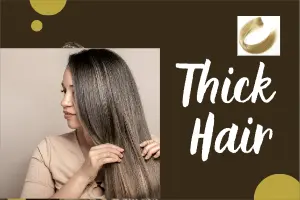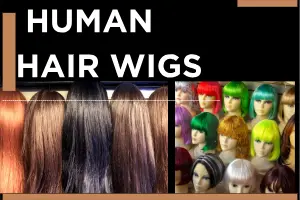Mastering the Art of Fine Hair: Volume and Health Tips That Work
Published: 19 Oct 2024
Do you struggle with fine hair that always falls flat, no matter what you do? You’re not alone. Fine hair is soft and silky, but often lacks the thickness and bounce many people want.
In this guide, we’ll explore The Art of Fine Hair—what it is, why it behaves the way it does, and how to manage it for more volume, shine, and strength. Whether you’re curious about better styling techniques or looking for real solutions to achieve healthier hair, this article has everything you need.
What Is Fine Hair?
Fine hair is defined by the diameter of each strand. It’s thinner than average but can still grow in high density. Many people confuse fine hair with thinning hair, but they’re not the same.
Fine hair means each strand is narrow.
Thinning hair means you have fewer strands.
So yes, you can have a full head of fine hair!
What Causes Fine Hair?
Fine hair is typically caused by genetics, meaning it’s inherited from your family. Hormonal changes, aging, or nutritional deficiencies can also contribute to the development of fine hair over time.
Genetic Factors
Most often, fine hair is inherited. If your parents or close relatives have it, chances are you will too.
Hormonal and Lifestyle Factors
Other causes include:
- Hormonal changes
- Poor diet (low in protein, iron, or vitamins)
- Stress or lack of sleep
- Over-styling or heat damage
Once you know the cause, it’s easier to care for your hair properly.
Common Problems with Fine Hair
Fine hair often lacks volume and gets weighed down easily by heavy products. Choosing eco-friendly hair products formulated with lightweight, natural ingredients can help maintain bounce without buildup. It’s more prone to oil buildup, making it look greasy faster than other types.

Breakage and split ends are common due to its delicate structure. Humidity and static can also cause styling frustrations and frizz.
Fine hair often:
- Lacks volume
- Tangles easily
- Gets greasy quickly
- Doesn’t hold styles well
- Looks limp after using the wrong products
Sound familiar? Let’s fix that.
Hair Products That Work for Fine Hair
Lightweight, volumizing products are ideal for fine hair to boost body without weighing it down.
Shampoos and Conditioners
Look for:
- Volumizing shampoos
- Lightweight conditioners
- Ingredients like biotin and collagen
Avoid heavy formulas- they weigh down fine strands.
Styling Products
Use:
- Volumizing mousse
- Lightweight hair spray
- Root-lifting foams
Stay away from thick creams or heavy oils. They make your hair look flatter.
Nourishing Ingredients
Choose products that are:
- Sulfate-free
- Silicone-free
Look for aloe vera, chamomile, and green tea extract to protect and nourish your hair.
Easy Styling Tips for More Volume
Blow-dry your hair upside down or use a round brush at the roots to create instant lift.

Opt for layered cuts and dry shampoo to maintain fullness and texture throughout the day.
Blow-Drying for Lift
Use a round brush for root volume
Blow-dry against the hair’s natural fall
Finish with cool air to lock in shape
Curling and Straightening
- Use small barrels for tighter curls that fall into soft waves
- Use flat irons with temperature control
- Always apply a heat protectant
Quick Tricks for Fuller-Looking Hair
- Flip your part to the opposite side
- Backcomb at the roots
- Focus on styling products at the roots
- Use dry shampoo to add texture and grip
These small moves make a big difference.
A Healthy Hair Routine for Fine Hair
A healthy hair routine for fine hair includes gentle cleansing with volumizing shampoo and lightweight conditioner. Incorporating hair growth tips, like regular scalp massages and nutrient-rich treatments, can support thickness. Minimize heat styling and use a wide-tooth comb to reduce breakage and maintain strength.
Daily Care
- Wash every other day with a gentle shampoo
- Use a light conditioner or leave-in product
- Detangle with care using a wide-toothed comb
- Use mousse or spray before heat styling
Weekly Treatments
- Deep conditioning once a week
- Use clarifying shampoo once a month to remove product buildup
Seasonal Adjustments
- Winter: Add deep moisturizing treatments
- Summer: Use anti-frizz products and UV protectants
Volume-Boosting Tools and Techniques
Volume-boosting tools like root-lifting sprays, round brushes, and diffusers help add body to fine hair. Techniques such as blow-drying upside down or using velcro rollers can create long-lasting lift and fullness.
Teasing (Backcombing)
Tease the crown section using a fine-toothed comb for instant lift. Go gently to avoid breakage.
Velcro Rollers
Pop them in at the roots for 20-30 minutes. No heat is required- just volume!
Mousse Magic
Apply mousse to damp hair from roots to ends. Focus on the crown and scrunch while drying.
Choosing the Right Haircuts and Styles
Go for haircuts with layers or textured ends to add movement and volume to fine hair.

Styles like bobs, pixie cuts, or soft waves can enhance fullness without weighing hair down.
Haircuts That Help
Short styles like bobs or pixie cuts add volume
Long hair? Add layers and bangs for movement
Choose cuts that match your face shape and hair goals.
Everyday Styles
- Braids, half-updos, and twists work well
- Change your part line for a fresh, lifted look
Formal Looks
- Go for soft curls or voluminous updos
- Add subtle hairpins or accessories
- A little teasing at the crown gives a polished finish
Conclusion
Fine hair doesn’t mean boring hair. You just need the right care and styling techniques to make it shine. With the right products, tools, and tricks, you can enjoy volume, bounce, and beauty every single day. Understanding The Art of Fine Hair is all about learning how to protect delicate strands, add body without weighing them down, and choose products that enhance natural texture. With a little consistency, your fine hair can look fuller, healthier, and more stylish than ever.
Be patient and try new things. Your perfect hair routine is waiting for you.
FAQs
Fine hair is often called thin hair or delicate hair because of the smaller diameter of each strand. It doesn’t mean you have fewer strands overall, just that each one is narrower and more fragile compared to thicker hair. Fine hair can still be healthy and strong, but it needs extra gentle care. People with fine hair often notice it tangles or breaks more easily.
Yes, fine hair is very common across all genders and ethnicities. Genetics largely determine whether your hair is fine, but factors like hormones, age, or frequent heat styling can make strands even thinner. Many people naturally have fine hair, and it’s considered a normal hair type. With the right routine, fine hair can still look full and vibrant.
You can’t permanently change the natural diameter of your strands, since that’s genetic. However, there are ways to make fine hair appear thicker and fuller. Volumizing shampoos, lightweight mousses, and strategic layered cuts add bounce and body. Scalp massages, a nutrient-rich diet, and minimizing chemical treatments also support healthier-looking hair.
Heavy products like thick oils, butters, or creamy conditioners can weigh fine hair down and make it look flat. Sulfates and silicones may also coat strands, leading to buildup that reduces volume. Instead, choose lightweight, volumizing formulas that lift at the roots. Products with ingredients like rice protein or keratin can give strength without heaviness.
Yes, fine hair is more prone to heat damage, so it’s best to minimize hot tools. If you do use straighteners, curling irons, or blow dryers, always apply a heat protectant spray first. Keep the temperature at a lower setting to avoid breakage. Heat-free styling, like braiding damp hair or using rollers, is a safer way to add texture.
Absolutely! A healthy diet plays a big role in keeping fine hair strong. Protein-rich foods like eggs and fish build keratin, while omega-3s from nuts and salmon boost shine and scalp health. Vitamins such as biotin, vitamin E, and vitamin D also improve resilience. Staying hydrated ensures your strands don’t become dry and brittle.
Fine hair tends to get oily more quickly because sebum travels faster down thinner strands. Washing every 2–3 days works for most people, but it depends on your scalp type. Over-washing can strip natural oils, making hair weaker and prone to dryness. Using a lightweight, clarifying shampoo occasionally helps prevent buildup without damaging strands.
People with fine hair often deal with a lack of volume, flatness, and quicker oil buildup at the roots. Because strands are more delicate, they’re also prone to tangling and breakage. Using heavy products can worsen these problems by weighing hair down. A tailored routine with volumizing, lightweight products helps maintain bounce and fullness.
Yes, fine hair feels smooth, soft, and thinner between your fingers compared to medium or coarse hair. It often slips easily through your hands and may feel silky. However, its delicacy means it tangles quickly and may appear limp without styling. With proper care, fine hair can still be strong and beautiful despite its fragile texture.
There are several natural and styling tricks to boost volume in fine hair. Volumizing shampoos and conditioners can lift roots without heaviness. Blow-drying upside down or using a round brush adds bounce. Layered haircuts and textured styles also create the illusion of fullness. Scalp massages and oils like rosemary may improve long-term growth and density.

- Be Respectful
- Stay Relevant
- Stay Positive
- True Feedback
- Encourage Discussion
- Avoid Spamming
- No Fake News
- Don't Copy-Paste
- No Personal Attacks

- Be Respectful
- Stay Relevant
- Stay Positive
- True Feedback
- Encourage Discussion
- Avoid Spamming
- No Fake News
- Don't Copy-Paste
- No Personal Attacks





